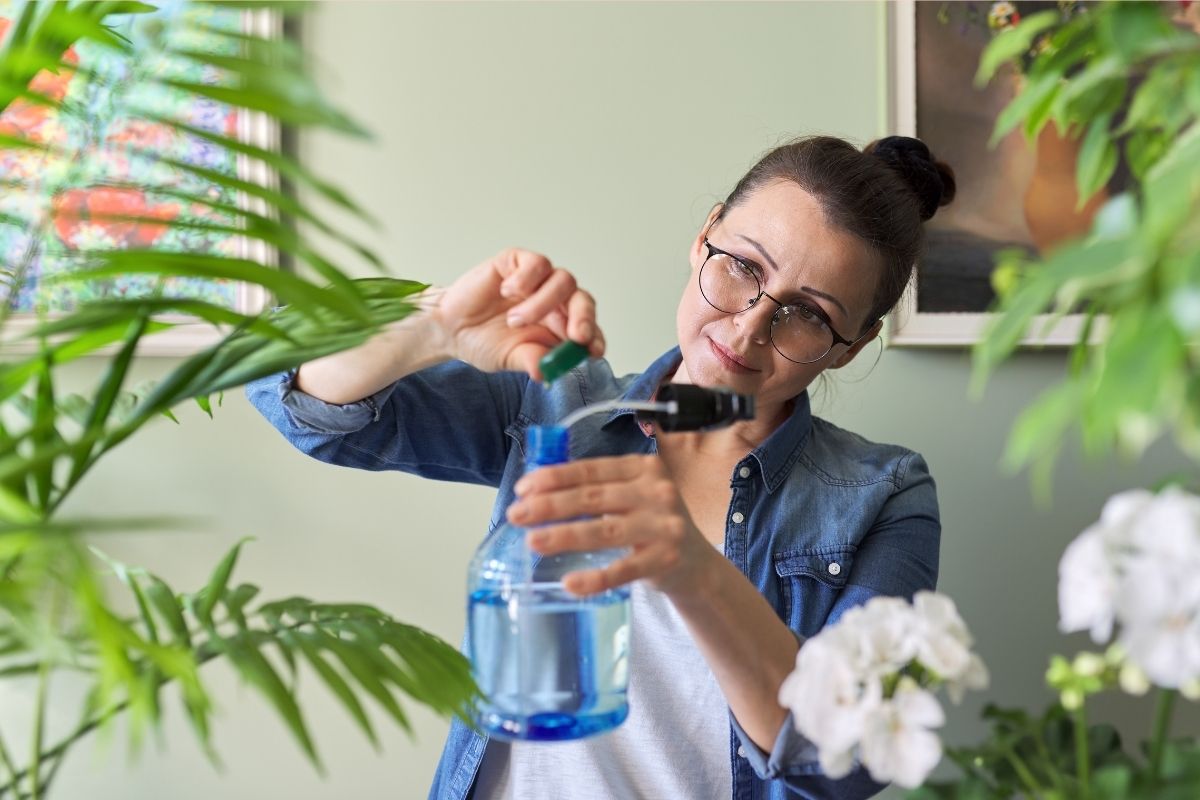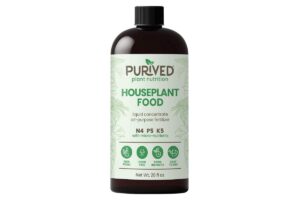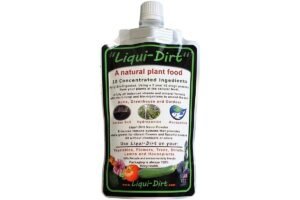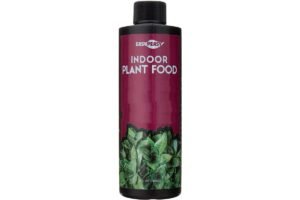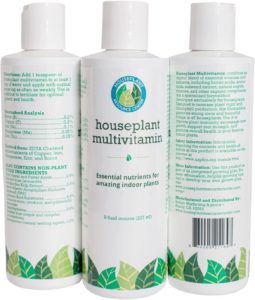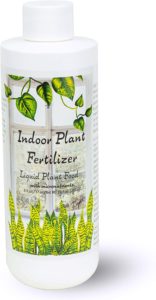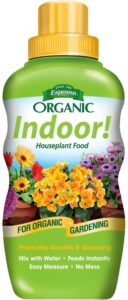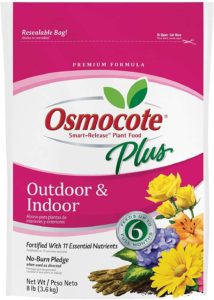Fertilizer gives your plant what soil can’t: A boost of nutrients on demand. Learning exactly how often to fertilize indoor plants is nearly as important as which fertilizer you choose. Fertilizer can be used to improve poor soil conditions and give slow-growing plants what they need to thrive.
When it comes to sourcing plant food, keep in mind that houseplants are totally different from outdoor plants, which get their nutrients from dead leaves and other organic matter around them. Indoor plants are limited to the amount of sunlight, water and nutrients that they are given by the person taking care of them, which is why it’s so important to give them the right fertilizer in the right amounts.
Many houseplants beginners are full of questions when it comes to fertilizing indoor plants. What type of fertilizer or plant food is best? With what NPK ratio? Will fertilizer treat yellowing leaves?
In this post, we’ll share some answers to these questions, PLUS our top recommendations for houseplant fertilizers and what they can do for your green friends.
houseplant fertilizer basics: how to feed houseplants
Most indoor plants like a regular dose of good fertilizer, but of course it all depends on the type of houseplant you have and what kind of potting soil it’s living in.
Soil is everything to a houseplant! Houseplants get almost all of their nutrients from the soil, so if you notice the leaves on your houseplant are discolored, this could signal nutrient deficiency. Other signs of nutrient deficiency common to houseplants include stunted growth, late flowering, or small or aborted blossoms and fruit.
If you know that your plants have a nutrient deficiency, then a fertilizer could help the plant balance out its deficiencies. If your potting soil is completely fresh, then you won’t need to add fertilizer for a few months at least, since the nutrients in the soil will be plenty to feed your plant during this time.
how often to fertilize your plants:
- Learn about the nutrient needs of your plant first (search our plant glossary for your plant!), pick a fertilizer according to these needs, and then read up on how to properly use your fertilizer. Recommended fertilizing frequency varies from once every 2 weeks, to once every 2-4 months.
- Read the instructions on your fertilizer to know the correct amount you need to use, and dilute it in water (usually, you can add it directly to your watering can).
- Then, simply water your plant with the nutrient-rich liquid and make sure it’s getting adequate sunlight.
- Notice if there is any new growth in the next few weeks, and wait until the soil dries completely before watering more*.
* Never fertilize a dehydrated plant. Plants absorb nutrients most effectively when they are hydrated according to their particular needs. Fertilizing a dehydrated plant can lead to fertilizer burn.
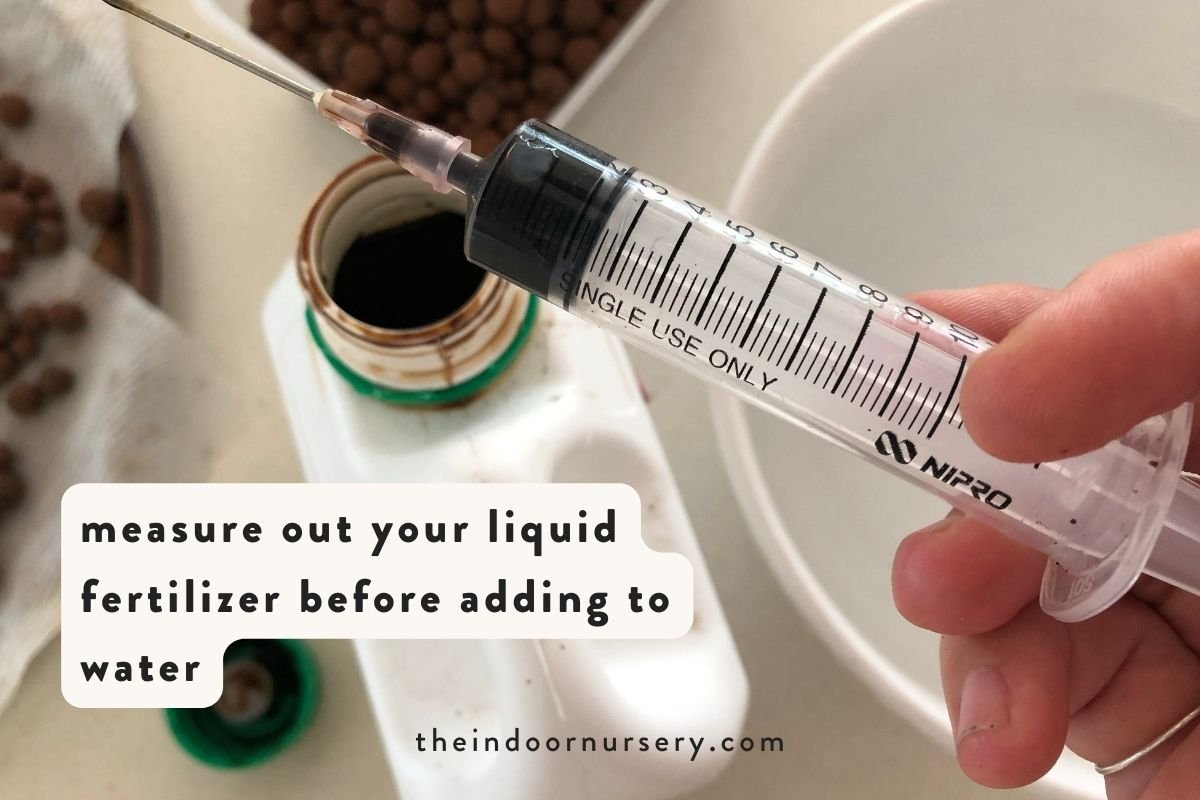
houseplant fertilizer basics: when to feed houseplants
Timing is everything when you fertilize houseplants, especially if you live in a seasonal climate. If you already have a gorgeous, healthy plant, you can give them a bit of fertilizer to sustain this growth.
Usually, people fertilize their houseplants in the spring and summer (during the growing season), and leave them alone in the wintertime.
Another time when houseplants need some extra love is whenever you repot them. This process stresses roots and disrupts the normal nutrient cycle in the micro ecosystem within your pot, and it’s important to give your plant a bit more attention following the repotting process. Add a bit of compost to the fresh potting soil, or use a 2-3X diluted mixture of liquid fertilizer with your normal watering schedule.
Another thing to note is that houseplants don’t need fertilizer in the winter months, since growth slows and dormancy sets in. The exception to this rule is if you live in a warmer, equatorial climate with high humidity where there is no winter season. In this case, fertilize your plants regularly throughout the year.
If you have flowering plants that bear fruit, it is important to know what season they bloom in and plan your fertilizing schedule accordingly. Many fertilizers are specifically formulated for either vegetative phases (pre-bloom), or flowering phases (this phase starts when you see the first buds on your plant). Blooming fertilizers like these ⬇️ help your plant sustain flowers for longer, and sometimes even produce multiple blooming cycles.
If you have more than a couple of potted plants (like this writer), it’s a great idea to set up a schedule for the different needs of your potted plants. Some of your plants may need heavy fertilizing once a week, and others only once every few months.
Frequency all depends on the potting soil you use, what type of climate you live in, and the type of plant you’re fertilizing.
different types of houseplant fertilizers
There are a few common types of houseplant fertilizers out there, and all of them typically contain the essential macronutrients for plants (nitrogen, phosphorus and potassium), as well as micronutrients like calcium and magnesium to support nutrient uptake.
- slow release fertilizers stay in the soil and slowly release nutrients to the soil over time. They usually come in coated shells, pellets, or little capsules that look like vitamins, and they’re great for supporting sustained growth and root development.
- liquid fertilizers are often diluted in water and are designed to be used more frequently, about every 1-2 weeks. They’re excellent for giving plants an immediate boost of nutrients and minerals.
- granular fertilizers usually come in pellets or pods and are pushed down in the soil close to your plant’s roots. The best ones are made from organic ingredients. The only thing with granules are that they are less accurate than liquid fertilizers meaning that you could accidentally overfertilize your and burn your plants roots.
Take careful note of the NPK ratio (the balance of nitrogen (N), phosphorus (P) and potassium (K) of each fertilizer. If you see a 10-10-10 on the packaging, then this means that your fertilizer has 10 percent of nitrogen, 10 percent of phosphorus and 10 percent of potassium.
Each plant has different macronutrient needs, and some houseplants, like African violets, actually need fertilizer more of one nutrient (African violets love phosphorus) than the others.

Another choice you’ll encounter when choosing fertilizer is whether to go organic or synthetic.
- organic fertilizers are made from natural-occurring compounds. They’re not all certified for organic use, but rather are sourced from things like bat guano, horse manure, or sea kelp. If you want a fertilizer that is free of chemicals and safe for growing organic produce, look for the OMRI certification for organic use.
- synthetic fertilizers have a different blend of minerals and usually cost less than their organic counterparts. They’re made from inorganic materials and compounds created in labs.
We recommend using organic fertilizers, since they’re generally safe for use around kids, pets, and homes.
how to fertilize houseplants naturally
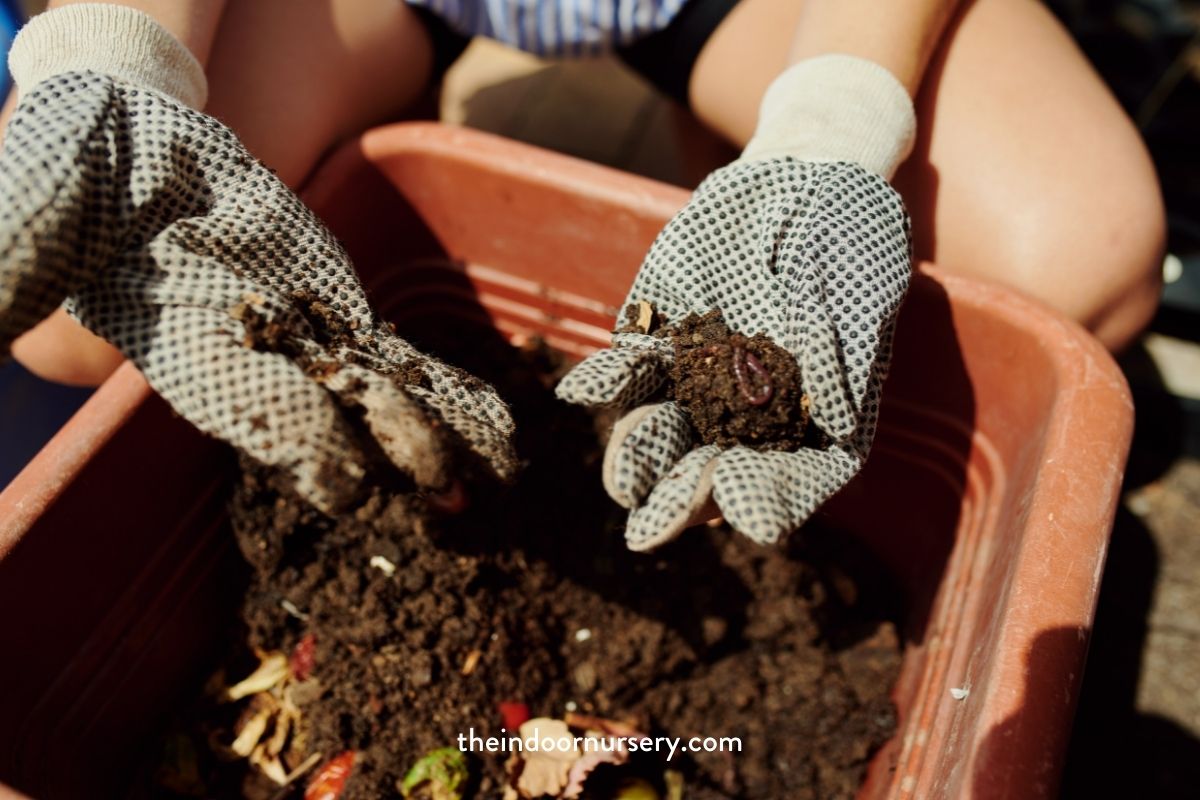
If you don’t want to buy another product for your plants, you can make your own fertilizer with a few simple organic ingredients. Be sure to save all your coffee grounds, eggshells and compost tea – plants love these when broken down! Here are a few naturally occurring houseplant fertilizers you can find in any gardener’s go-to fertilizer kit:
- Worm tea
- Bone meal
- Animal manures
- Coffee grounds
- Liquid Kelp
- Fish emulsion
- Compost tea
- Plant extracts
- Rock phosphate
- Bat guano
- Eggshells
- Aquarium water
- Banana peels
You can gather the waste around your household and create your very own fertilizer. These organic materials will help provide the nutrients that your plant needs.
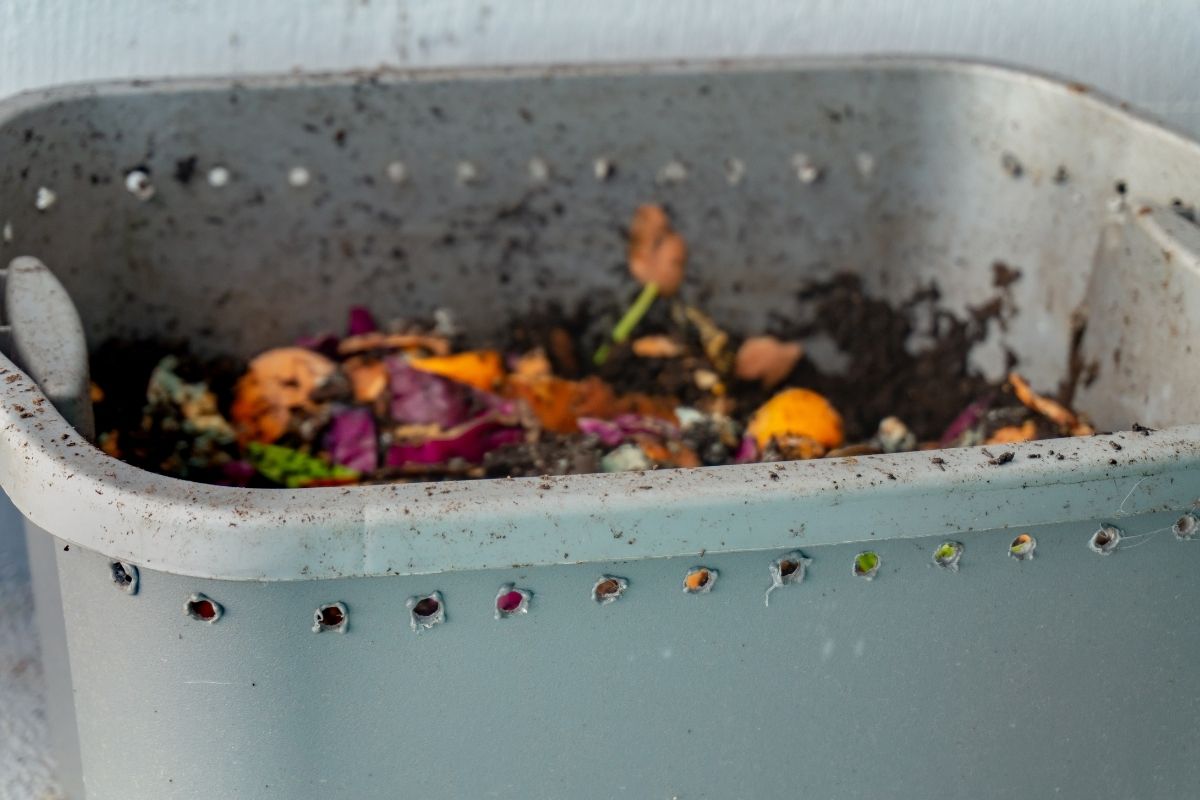
the 5 best fertilizers (and plant food) for indoor plants & houseplants
If you don’t have time, space or interest in rounding up some DIY fertilizer, there’s good news! The internet!! Here are five of our favorite fertilizers for houseplants:
Easy Peasy All-Purpose Indoor Plant Fertilizer
A bottle of this liquid food for houseplants promotes healthy, green leaf growth and beautiful blossoms. It uses a special N-P-K ratio for indoor plants with added sulfur to promote better nutrient absorption for your plants roots. It is made with the highest quality ingredients, and you can fertilize your plants once a week.
Houseplant Multivitamin Premium Liquid Fertilizer for Indoor Plants
A multi-vitamin for houseplants? This fertilizer includes iron, zinc, and other micronutrients to ensure your plant’s healthy growth. It is completely organic without any toxic chemicals that could harm or burn your plant. It also includes a free houseplant care e-book with your purchase.
Aquatic Arts Indoor Plant Fertilizer
This liquid indoor plant fertilizer helps promote healthy growth in your plants. The vitamins and nutrients it contains inside boosts root and bloom growth. You can use it to grow your indoor plants in pots for up to one year.
Espoma Organic Indoor Plant Food
This liquid fertilizer for indoor plants is great for large & small plants like pothos, fiddle leaf fig, monstera, snake & palms. It has the perfect NPK ratio of 2-2-2, which means it has a balanced mixture for all different types of houseplants.
Just mix a 1/2 cap full with a quart of water and saturate the plant’s soil. It should be used every 2-4 weeks.
This is great pick for beginners who tend to accidentally overfertilize their houseplants.
Osmocote Smart-Release Plant Food
These slow-release pellets are fortified with 11 essential nutrients. They feed your plants for up to 6 months and come in a semipermeable resinous shell that slowly releases nutrients based on the temperature. The only downside is that you could risk overfertilizing, but you want something that will last a long time and give you the most bang for your buck, these smart-release granules are the way to go.
final thoughts on how often to fertilize indoor plants
Don’t worry if you can’t figure out the ideal fertilizer for your plants on the first try. Often, it takes time and a few mistakes to figure out what your plants need when you first start fertilizing indoor plants. Just make sure to ALWAYS read the instructions on your fertilizer and study the specific nutritional needs of your plant before applying. This will save you a lot of time and energy, and get your plant growing lush foliage and flowers in no time.
FAQs
Can you over fertilize indoor plants?
Yes, unfortunately! This results in fertilizer burn. You’ll know if your plant has fertilizer burn because the leaves will be brown around the edges and possibly start turning yellow. You may also see a white crust forming on the surface of your plant’s potting soil. Over-fertilizing houseplants can leave them susceptible to common pest infestation and disease. Too much fertilizer actually pulls moisture away from your plant’s roots, so take it easy!
How often should I fertilize my indoor plants?
This all depends on your plant. When using fertilizer, take into account how much water your plant needs and what temperature it’s used to. Some houseplants thrive with lots of water, but others develop root rot with the same amount of hydration. The important thing to remember is to never fertilize a dehydrated plant. If your plant is a bit parched, water it one or two days before applying fertilizer to make sure your plant absorbs nutrients properly.
How often should I fertilize plants in the winter months?
It isn’t necessary to fertilize your plant in the winter, unless you live in a tropical climate with higher humidity. Plants recommence their active growth in the spring.
More about fertilizing
- 10 Best Worm Composter Bins For Easy Homemade Compost
- Compost Starter 101: When You Need It And How To Make It
- Our top pothos fertilizer picks for luscious vines
- 5 reasons to use coffee as fertilizer for your plants
- Best fertilizer for Monstera plants for gorgeous leaves
- Fertilizer Burn on Plants? Here’s How to Fix it
- Fiddle leaf fig fertilizer: How to feed your fiddle leaf

